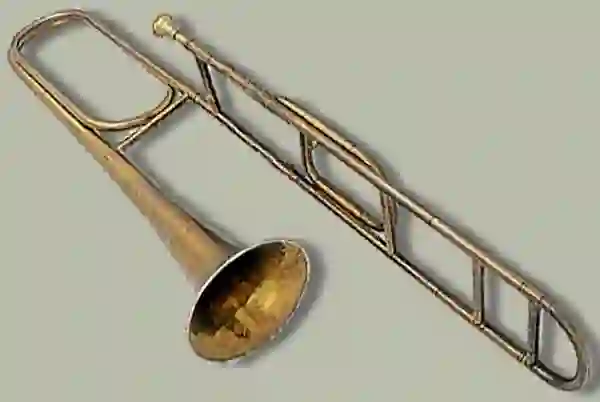Historical development of the Trombone - Philipp Dangas
Historical development of the Trombone
The slide trombone was created in the 15th century by further developing the cylindrical type of "busine". Their construction was the result of attempts made at that time, in line with the further development of music, to make the tube length of the metal cup-mouthpiece instruments mechanically variable during play.
The German trombone maker Hans Neuschel in Nuremberg built excellent trombones in 1520. Even then, the name trombones or the Italian term "trombone", i.e. "big tromba" (big trumpet, "-one" is Italian augmentation syllable) was used. Also in the 16th century, i.e. at the time of Giovanni Pierluigi da Palestrina (1526-1594) and Giovanni Gabrieli (1557-1612), the trombone was used chorally, i.e. in different tunings, namely as soprano, alto, tenor and bass trombone.
In the Baroque era, i.e. from 1600 onwards, the art of “trombone making”, which was primarily native to Nuremberg, achieved an extremely high level of development. Of the famous trombone workshops there, only Hans Heinlein (around 1630), Wolf Birkholz (around 1650), Hans Leonhard Ehe d.Ä. (around 1670) and Johann Leonhard Ehe (around 1740). The main task of the trombones in the orchestra in the 17th and 18th centuries was to reinforce the choral voices in the large choral works in unison. Only in the operas of Gluck and Mozart were they assigned independent orchestral functions. With the chromating of the trumpets and horns, the technical requirements of the trombones also increased. In this regard, reference should only be made to the passages in the overture to Gioacchino Rossini's "William Tell", which even today represent the maximum speed of the train movement in a longer passage.
The introduction of the valve instruments in the years around 1830 coincided with the emergence of the romantic orchestra ála Carl Maria von Weber (1786-1826), Franz Schubert (1797-1828), Robert Schumann (1810-1856) and Frederic Chopin (1810- 1849), whose sonority was greater and the timbre softer than that of the classical orchestra. The tenor trombone is the root and standard instrument of the trombone family. Since the emergence of the final form and intonation of the trombones, i.e. since about 1600, it has remained unchanged both in its basic structure and in its intonation (B flat) and at the same time has remained in use without interruption.
Table summary of trombone usage in music
The table below shows the use of the trombone in music shown. Musical works are performed with the name of the composer and the work.

The trombone in large representation
The trombone in its present form originated in Burgundy around 1450. As a further development of the slide trumpet. And next to the violin, it is one of the oldest fully chromatically playable orchestral instruments.
Internal search function
| Name | Value | Delete |
|---|